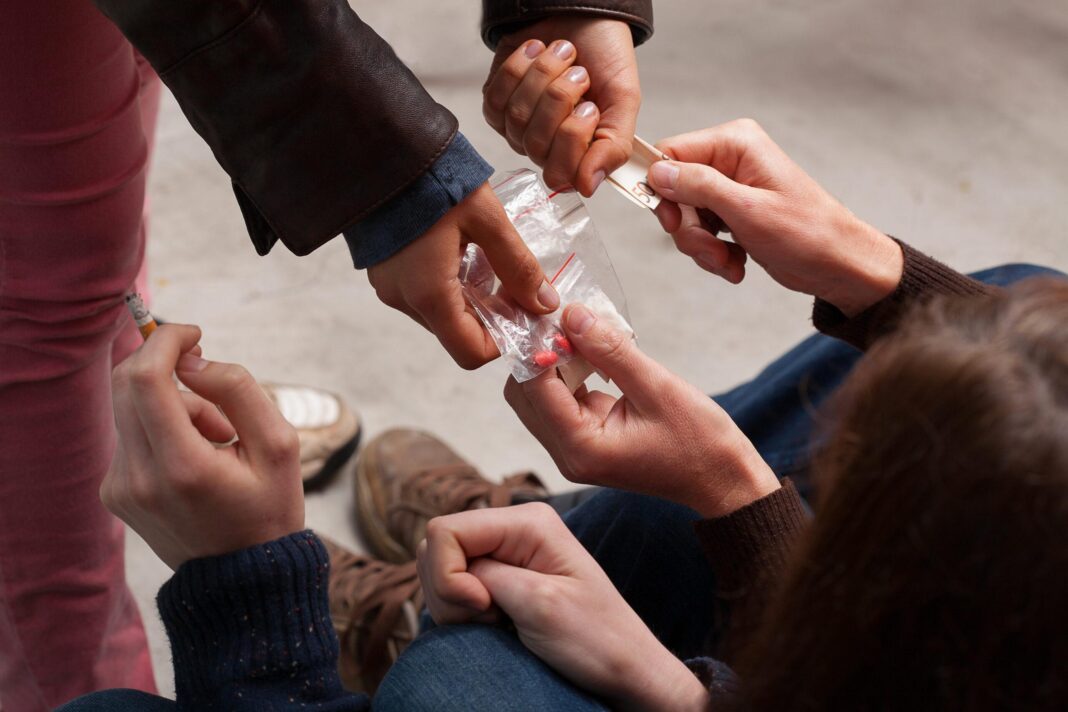By: Muhammad Iqbal Saghla
Youth at risk refers to young individuals who face multiple challenges that pose a threat to their future, including poverty, violence, abuse, neglect, mental health problems, and substance abuse. These challenges can have adverse effects on their physical, emotional, social, and cognitive development, resulting in negative outcomes such as school dropout, criminal behavior, delinquency, homelessness, and addiction. The issue of drug addiction is increasingly concerning in Pakistan’s educational institutions, where students are exposed to various types of drugs such as cannabis, heroin, opiates, and amphetamines. This problem is particularly widespread in universities, where academic pressure, peer influence, and lack of supervision contribute to students experimenting with drugs. According to a survey conducted by the United Nations Office on Drugs and Crime (UNODC), approximately 8 percent of university students in Pakistan have used illegal drugs at least once, with cannabis being the most commonly used substance.
In addition, the survey found that drug use was higher among male students than female students, and the age of initiation was as young as 12 years old. This article will likely discuss the causes and consequences of drug addiction among students, as well as possible solutions to deal with the problem. The problem of drug addiction in Pakistan’s educational institutions is alarming and requires immediate attention. Drug abuse not only harms an individual’s health and well-being but also affects their academic performance, relationships, and future prospects. Additionally, drug addiction can lead to criminal activity, violence, and the spread of infectious diseases such as HIV and hepatitis C, among others. Therefore, it is crucial to raise awareness about the dangers of drug abuse and provide prevention, intervention, and treatment services to those in need.
Pakistan serves as a transit point for drugs trafficked from Afghanistan to other countries, and it is also a significant consumer of illicit drugs. This article will also discuss the statistics and data related to drug addiction among youth in Pakistan’s academic institutions, along with the factors contributing to this problem. According to a survey conducted by the Anti-Narcotics Force (ANF) in collaboration with the United Nations Development Program (UNDP), approximately 7.6 million people in Pakistan are drug addicts. Among these drug addicts, approximately 78% are male, and 22% are female. The same survey revealed that the age group of 15-35 is the most affected by drug addiction. Moreover, the survey highlighted that drug addiction is prevalent in almost all segments of society, including students and professionals.
Students who are influenced by their peers often start using drugs as a way to fit in or feel accepted. Drugs are readily available in many areas of Pakistan, making it easy for students to access them. The lack of effective law enforcement and regulations has contributed to the availability of drugs in the market. Academic pressure, family issues, and other life stressors can lead students to seek relief through drugs. The use of drugs may provide a temporary escape from their problems, eventually leading to addiction.
Many students are not aware of the consequences of drug use, nor are they familiar with the negative effects that drugs can have on their health, education, and future. Drug addiction is a growing problem in educational institutions worldwide, and drug use in these institutions is not only illegal but also has numerous negative impacts on the users, their peers, and the overall educational environment. Drugs, whether illegal or prescription, can significantly impact a student’s academic performance, as well as their physical and mental well-being. Drug addiction is common in educational institutions and affects students of all age groups and backgrounds. Many students turn to drugs during their college years as a way to socialize or cope with stress, which can eventually lead to addiction. Commonly used drugs in academic institutions include marijuana, prescription drugs, and stimulants like Adderall.
Drug addiction in educational institutions has significant consequences for both the users and the overall educational environment. Firstly, addiction can severely impact a student’s academic performance, leading to missed classes, struggles with coursework, and ultimately poor grades or academic suspension. Additionally, drug addiction can deteriorate mental health and physical well-being, further hindering academic achievement. Moreover, drug use on campus creates an unsafe environment for all students, as it can impair judgment and increase risk-taking behavior. It can also contribute to increased crime and violence, negatively impacting the entire academic community.
Several factors contribute to drug use in educational institutions. Peer pressure is a major influence, as students often feel the need to fit in with their peers. Academic stress is another significant factor, as students may resort to drugs as a coping mechanism for the pressure of coursework and exams. To combat drug addiction, educational institutions must prioritize awareness and prevention. They should educate students about the dangers of drug abuse and provide resources for those struggling with addiction. Offering counseling services, support groups, and implementing policies to prevent drug use on campus are also crucial steps.
Drug addiction in educational institutions affects not only the users but also the entire academic community. Thus, educational institutions must take a proactive approach by promoting education, providing support, and implementing policies to create a safe and healthy learning environment for all students. Drug addiction knows no boundaries of age, gender, or social status. To address this issue, schools and colleges play a vital role in creating awareness and implementing drug prevention initiatives. Parents and families also have a significant influence on preventing drug addiction by fostering a supportive environment and open communication with their children. Governments and society should allocate more funding for prevention programs, raise public awareness, enact stricter laws, provide access to treatment programs, and collaborate with educational institutions and community organizations to develop a comprehensive approach to combating drug addiction.
In Pakistan, drug addiction among the youth population has been on the rise, attributed to socio-economic factors such as poverty, lack of education, and unemployment. Easy access to drugs and the influence of social media have further contributed to the problem. Educational institutions in Pakistan are not exempt from this issue, and drug addiction among students is increasingly prevalent. This trend negatively impacts academic performance, mental health, and overall well-being. It can also lead to criminal activities and social stigma, further compromising future prospects.
The Pakistani government has launched initiatives to combat drug addiction, including awareness campaigns and rehabilitation centers. Efforts to increase law enforcement and regulate drug trafficking have also been made. However, more needs to be done to effectively address this issue and prioritize education, awareness, and rehabilitation. By working together and taking responsibility as a society and parents, we can strive to eradicate drugs from educational institutions and create a brighter future.
The writer is a freelance columnist. He can be reached at [email protected]






